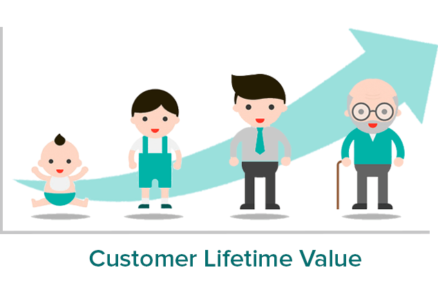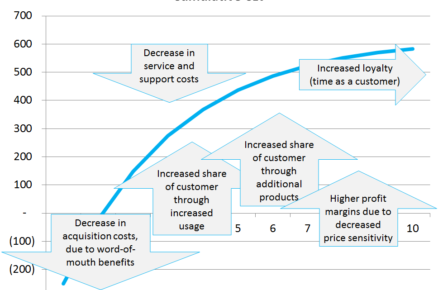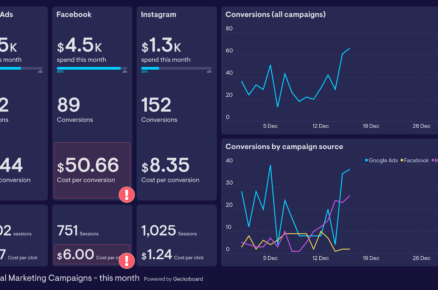The Very Basics of Scorecards
First things first, I am by no means a scorecard technician. I do not know how to build a scorecard myself, though I have a fair idea of how they are built; if that makes sense. As the title suggests, this article takes a simplistic view of the subject. I will delve into the underlying mathematics at only the highest of levels and only where necessary to explain another point. This article treats scorecards as just another tool in the credit risk process, albeit an important one that enables most of the other strategies discussed on this blog. I have asked a colleague to write a more specialised article covering the technical aspects and will post that as soon as it is available.
Scorecards aim to replace subjective human judgement with objective and statistically valid measures; replacing inconsistent anecdote-based decisions with consistent evidence-based ones. What they do is essentially no different from what a credit assessor would do, they just do it in a more objective and repeatable way. Although this difference may seem small, it enables a large array of new and profitable strategies.
So what is a scorecard?
A scorecard is a means of assigning importance to pieces of data so that a final decision can be made regarding the underlying account’s suitableness for a particular strategy. They do this by separating the data into its individual characteristics and then assigning a score to each characteristic based on its value and the average risk represented by that value.
For example an application for a new loan might be separated into age, income, length of relationship with the bank, credit bureau score, etc. Then the each possible value of those characteristics will be assigned a score based on the degree to which they impact risk. In this example ages between 19 and 24 might be given a score of – 100, ages between 25 and 30 a score of -75 and so on until ages 50 and upwards are given a score of +10. In this scenario young applicants are ‘punished’ while older customers benefit marginally from their age. This implies that risk has been shown to be inversely related to age. The diagram below shows an extract of a possible scorecard:

The score for each of these characteristics is then added to reach a final score. The final score produced by the scorecard is attached to a risk measure; usually something like the probability of an account going 90 days into arrears within the next 12 months. Reviewing this score-to-risk relationship allows a risk manager to set the point at which they will decline applications (the cut-off) and to understand the relative risk of each customer segment on the book. The diagram below shows how this score-to-risk relationship can be used to set a cut-off.

How is a scorecard built?
Basically what the scorecard builder wants to do is identify which characteristics at one point in time are predictive of a given outcome before or at some future point in time. To do this historic data must be structured so that one period can represent the ‘present state’ and the subsequent periods can represent the ‘future state’. In other words, if two years of data is available for analysis (the current month can be called Month 0 and the last Month can be called Month -24) then the most distant six months (from Month -24 to Month -18) will be used to represent the ‘current state’ or, more correctly, the observation period while the subsequent months (Months -17 to 0) represent the known future of those first six months and are called ‘the outcome period’. The type of data used in each of these periods will vary to reflect these differences so that application data (applicant age, applicant income, applicant bureau score, loan size requested, etc.) is important in the observation period and performance data (current balance, current days in arrears, etc.) is important in the outcome period.
With this simple step completed the accounts in the observation period must be defined and sorted based on their performance during the outcome period. To start this process a ‘bad definition’ and ‘good definition’ must first be agreed upon. This is usually something like: ‘to be considered bad, an account must have gone past 90 days in delinquency at least once during the 18 month outcome period’ and ‘to be considered good an account must never have gone past 30 days in delinquency during the same period’. Accounts that meet neither definition are classified as ‘indeterminate’.
Thus separated, the unique characteristics of each group can be identified. The data that was available at the time of application for every ‘good’ and ‘bad’ account is statistically tested and those characteristics with largely similar values within one group but largely varying values across groups are valuable indicators of risk and should be considered for the scorecard. For example if younger customers were shown to have a higher tendency to go ‘bad’ than older customers, then age can be said to be predictive of risk. If on average 5% of all accounts go bad but a full 20% of customers aged between 19 and 25 go bad while only 2% of customers aged over 50 go bad then age can be said to be a strong predictor of risk. There are a number of statistical tools that will identify these key characteristics and the degree to which they influence risk more accurately than this but they won’t be covered here.
Once each characteristic that is predictive of risk has been identified along with its relative importance some cleaning-up of the model is needed to ensure that no characteristics are overly correlated. That is, that no two characteristics are in effect showing the same thing. If this is the case, only the best of the related characteristics will be kept while the other will be discarded to prevent, for want of a better term, double-counting. Many characteristics are correlated in some way, for example the older you are the more likely you are to be married, but this is fine so long as both characteristics add some new information in their own right as is usually the case with age and marital status – an older, married applicant is less risky than a younger, married applicant just as a married, older applicant is less risky than a single, older applicant. However, there are cases where the two characteristics move so closely together that the one does not add any new information and should therefore not be included.
So, once the final characteristics and their relative weightings have been selected the basic scorecard is effectively in place. The final step is to make the outputs of the scorecard useable in the context of the business. This usually involves summarising the scores into a few score bands and may also include the addition of a constant – or some other means of manipulating the scores – so that the new scores match with other existing or previous models.
How do scorecards benefit an organisation?
Scorecards benefit organisations in two major ways: by describing risk in very fine detail they allow lenders to move beyond simple yes/ no decisions and to implement a wide range of segmented strategies; and by formalising the lending decision they provide lenders with consistency and measurability.
One of the major weaknesses of a manual decisioning system is that it seldom does more than identify the applications which should be declined leaving those that remain to be accepted and thereafter treated as being the same. This makes it very difficult to implement risk-segmented strategies. A scorecard, however, prioritises all accounts in order of risk and then declines those deemed too risky. This means that all accepted accounts can still be segmented by risk and this can be used as a basis for risk-based pricing, risk-based limit setting, etc.
The second major benefit comes from the standardisation of decisions. In a manual system the credit policy may well be centrally conceived but the quality of its implementation will be dependent on the branch or staff member actually processing the application. By implementing a scorecard this is no longer the case and the roll-out of a scorecard is almost always accompanied by the reduction in bad rates.
Over-and-above these risk benefits, the roll-out of a scorecard is also almost always accompanied by an increase in acceptance rates. This is because manual reviewers tend to be more conservative than they need to be in cases that vary in some way from the standard. The nature of a single credit policy is such that to qualify for a loan a customer must exceed the minimum requirements for every policy rule. For example, to get a loan the customer must be above the minimum age (say 28), must have been with the bank for more than the minimum period (say 6 months) and must have no adverse remarks on the credit bureau. A client of 26 with a five year history with the bank and a clean credit report would be declined. With a scorecard in place though the relative importance of exceeding one criteria can be weighed against the relative importance of missing another and a more accurate decision can be made; almost always allowing more customers in.
Implementing scorecards
There are three levels of scorecard sophistication and, as with everything else in business, the best choice for any situation will likely involve a compromise between accuracy and cost.
The first option is to create an expert model. This is a manual approximation of a scorecard based on the experience of several experts. Ideally this exercise would be supported by some form of scenario planning tool where the results of various adjustments could be seen for a series of dummy applications – or genuine historic applications if these exist – until the results that meet the expectations of the ‘experts’. This method is better than manual decisioning since it leads to a system that looks at each customer in their entirety and because it enforces a standardised outcome. That said, since it is built upon relatively subjective judgements it should be replaced with a statistically built scorecard as soon as enough data is available to do so.
An alternative to the expert model is a generic scorecard. These are scorecards which have been built statistically but using a pool of similar though not customer-specific data. These scorecards are more accurate than expert models so as long as the data on which they were built reasonably resembles the situation in which they are to be employed. A bureau-level scorecard is probably the purest example of such a scorecard though generic scorecards exist for a range of different products and for each stage of the credit life-cycle.
Ideally, they should first be fine-tuned prior to their roll-out to compensate for any customer-specific quirks that may exist. During a fine-tuning, actual data is run through the scorecard and the results used to make small adjustments to the weightings given to each characteristic in the scorecard while the structure of the scorecard itself is left unchanged. For example, assume the original scorecard assigned the following weightings: -100 for the age group 19 to 24; -75 for the age group 25 to 30; -50 for the age group 31 to 40; and 0 for the age group 41 upwards. This could either be implemented as it is bit if there is enough data to do a fine-tune it might reveal that in this particular case the weightings should actually be as follows: -120 for the age group 19 to 24; -100 for the age group 25 to 30; -50 for the age group 31 to 40; and 10 for the age group 41 upwards. The scorecard structure though, as you can see, does not change.
In a situation where there is no client-specific data and no industry-level data exists, an expert model may be best. However, where there is no client-specific data but where there is industry-level data it is better to use a generic scorecard. In a case where there is both some client-specific data and some industry-level data a fine-tuned generic scorecard will produce the best results.
The most accurate results will always come, however, from a bespoke scorecard. That is a scorecard built from scratch using the client’s own data. This process requires significant levels of good quality data and access to advanced analytical skills and tools but the benefits of a good scorecard will be felt throughout the organisation.
Source: https://blegrange.wordpress.com/





